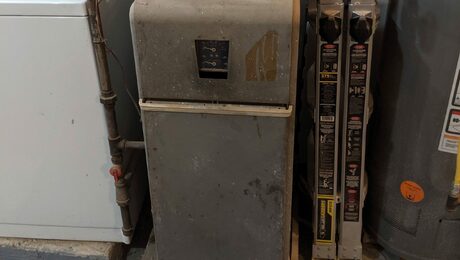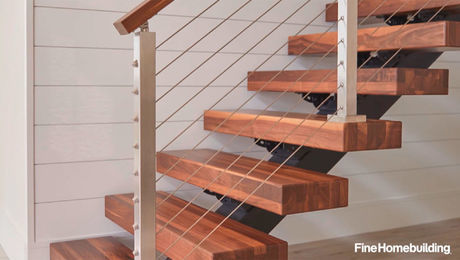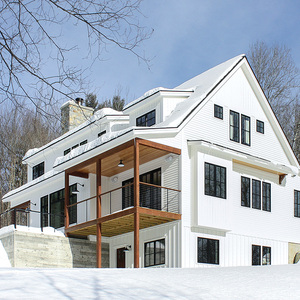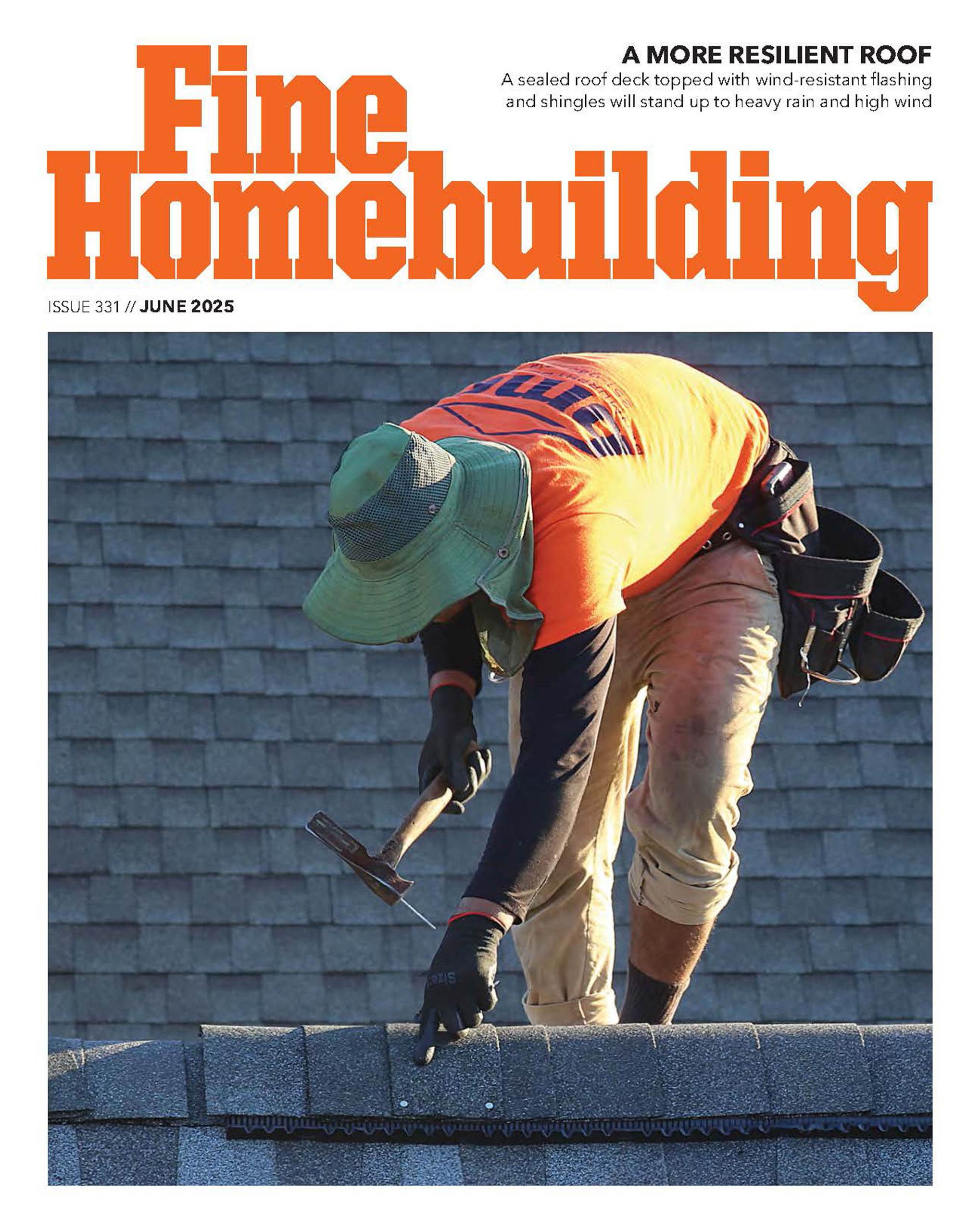I’ve got two questions for you experts. First, the scenario:
We’ve finally decided to get rid of the ugly cracked concrete slab alongside our house and replace it with a paver-stone patio.
We have a guy in this week that’s been tearing it all out for us with a skid-steer and is going to pour us new concrete steps as well, leaving the patio for us to finish up.
First question: As you can see in the photo, when removing the slab, it left us with this gap under our brick half-wall. That doesn’t seem good. What can/should we do to remedy this? Pour concrete down there somehow? The sand goes quite a way, so I’m not sure if there was anything under the brick originally, but I want to make sure this is remedied before we put in the patio.
Second question: the old slab, as ugly as it was, had a decent sand base underneath it. About 6″. Alas, the old slab was too low and we want to rais the patio near the house to make sure it has a good slope. We’ll probably raise it 4″ or so. Can I just add paver base on top, or is there such thing as ‘too much’ base?



















Replies
Oops...forgot to include the photo!
Four inches of sand is too much. Sand won't lock together and the pavers will shift around over time. A proper base for pedestrian traffic where the underlying soil is not mushy is 4 to 5 inches of crushed stone, compacted with a jumping jack style (not a vibratory plate style) compactor. On top of that use a screed to place about 1 inch of stone dust, sloped about ¼" per foot away from the building, and don't compact it. Then place the pavers and edging. Then spread DRY sand over the pavers and compact the pavers into the stone dust with a vibratory plate compactor. Begin compacting away from the building and work towards it. Add more sand as needed.
If you check the archives there are some longer, more detailed explanations.
Well, it's easy enough to dig out the sand, but the catch is that I still have a large void to fill. To get the height/slope I want, I'll likely need 8-10" of crushed stone. Is that fine?
Another question...we just found out that we're going to have at least an extra yard of concrete after the steps are poured (there's a minimum order).Would it make sense to put the extra concrete in that gap under the brick wall? Would there be a way to get the concrete in there so it actualy supports the wall above?
That's fine, it won't hurt a bit to have a thicker base. When placing the stone, do it in layers of about 4 to 6 inches at a time, compacting between each layer. It compacts best when wet, but not swimming. Water acts as a lubricant to increase compaction.
Good to know. It'll just mean a few more trips via the wheelbarrow ;o)
It's common to have 10 - 12" of "base" under pavers designed to carry vehicle traffic, so no depth concern. If you have an option in your area, use a cruched stone base where the rock particles are "jagged", not round. Crushed limestones with fines are good. The arguement about proper compaction equipment is almost as rife with controversy as tar paper vs. tyvek. The correct answer is both will work, but if you have the right size equipment and know what you are doing, vibratory compaction for the base material is best. It is a good idea to use a jumping jack style compactor for the subsoil before putting in the base, because the subsoil will almost always have high cohesive properties. A good base material will not only not settle, but it will spread forces laterally. A properly sized vibratory compactor, with the right lift depth, will force the base particles to separate and rotate into an interlocking "best fit" condition. This will spread forces (from above and below) the best. That being said, a jumping jack will work fine as well for a patio / walkway situation and is easier to use correctly for a novice.One more point on paver compaction. For the best possible even surface, do the first run of compaction over a swept clean surface, not over sand. You want the bottom of the compactor to contact the paver surface as much as possible. When you are laying the pavers (even over a screeded stone dust) they will end up a little uneven from walking, kneeling, etc. on them. The first compaction run will smooth this out. Then spread sand, let it dry, and compact so that it vibrates into the gaps. If you are using clay pavers instead of concrete, they are somewhat brittle so it is best to use a plate compactor with a rubber cover on the plate (rare) or to compact over sheets of 1/4" plywood. If you are using concrete pavers, compact away.
I've heard that ants love the sand used as the "grout" between the pavers, but will stay away from stone dust.
>> As you can see in the photo, when removing the slab, it left us with this gap under our brick half-wall. That doesn't seem good. What can/should we do to remedy this? Pour concrete down there somehow? <<
Wow - to say >> That doesn't seem good. << is an understatement. You better get some kind of concrete footer under there ASAP or you are going to need to tear off that brick veneer too. I can see in the pic that it is already cracking. Once a brick veneer cracks - well yea, it can be patched, but it is always just going to be a cracked and patched brick veneer. It would be best if the new footer was pinned to the house foundation to bond the 2 together. what is the back of the exposed gap? concrete? Cinder blocks?
Might be hard to imagine, but that 1/2 height brick veneer weighs literally tons and gravity isn't gonna wait for someone to come up with a good plan...
The cracked area is partly due to the fact that that area has been torn up some time int he past and poorly patched.BUT...yea...this brick weighs a ton and a footer seems like the right thing to do ;o)OK, so we're going to add that to the project.As for what's behind the brick...it is a 1927 house, so it's brick, rusty nails as anchors, CMU (up about 4 feet) and then sheathing + tar (the rest of the way up)
Wow, those photos pose many questions.
Using the patio for a brick ledge is, ah, "innovative" to say the least--or is there a lintel angle supporting the brick veneer?
Is the conduit 'for' the dish, or do the local dish installers regularly just bolt on to the first handy thing?
Now, to your patio, if the house's brick veneer is properly supported (an important "if"), you could just use that as the finish elevation for the patio. The base & sub base depths would be calculated from that datum. As a guess, the "base sand" was (mostly) sufficient for a concrete slab--but, that's not nearly enough for pavers typically. Now, it's probably worthwhile to salvage that sand rather than cart it off. But, it will need to be out of the way while you cut in a proplery compacted subbase.
Your specific location will determine what sort, how deep, what compaction, and what material the sub-base needs to be. (Oh, and you might want to check, some jurisdictions may require you to take out a permit for the work, along with having specific requirements for compaction, materials, etc.--don't want you surprised 3/4 finished.)
Well, I talked with the contractor today and he said that there isn't a need for a footer for the brick and that it will hang just fine as is, though he said he'd be glad to put in some angle iron there.If he doesn't feel the need, I might just do it myself anyways for peace of mind.As for our soil, we're pretty much solid clay. I'm going to dig out all the sand and will use it for the sand base on top of the crushed stone.Permit for patios? really? Ugh. I'll look into it. ;o)
Permit for patios? really? Ugh. I'll look into it.
Yep, you'd need one in my town (not for the demo, strangely enough, though).Occupational hazard of my occupation not being around (sorry Bubba)
>> Permit for patios? <<
No such animal here. Not even for a driveway unless you don't already have an apron and need to cut the curb.
As far as I'm concerned regulating exterior walking surfaces/driving surfaces on private property is just an excuse to get fees from homeowner and home buyers (the ultimate payer of such fees) and is just a perfect example of overregulation. Just a perfect example of the kind of thinking that ends making homes cost $150 or $200 a sq ft (minimum) in some states.
Well, I finally talked to my architect-brother.He said a solid footer is a bad idea, as that will only trap any water that gets back there and suggested that if there isn't any angle iron underneath, get some, and support it with 4" CMU blocks wedged underneath. Then just put the base and patio above that. Sounds reasonable.
He said a solid footer is a bad idea, as that will only trap any water that gets back there and suggested that if there isn't any angle iron underneath, get some, and support it with 4" CMU blocks wedged underneath.
Ok, he's been there, and I haven't, but that seems wrong on several levels to me.
Ok, a poured footer is goint to be a pain, as there's no good way to tie it to the existing foundation (3-4" dowels every 12" a nightmare), and it would be a cold joint. The brick is likely "sticking" because the last course is solid mortared to the wall, making the drainage plane to the weep holes (I hope) are in the first or second course. (Oh, yeah, you are kind of limited in how high you can raise your new patio by the elevation of the weep holes in the brick veneer.)
If you install angle iron, it should just bolt to the foundation below the brick veneer, once bolted, it would not need further support with blocks.
Now, you also have another situation (that sadly jsut occured to me this morning). When you start supporting the brick veneer correctly, you are going to have to do that from "correct support" to "correct support." Note that those two points do not necessarily coincide with the present exposed scope of work.
This is one of those risks of might-as-well-as that crop up in remodel work. Dig up junky patio. Oops, brick veneer was sitting on the patio. Ok, support the veneer. Oops, none of the veneer is supported. "Patio" prject just wrapped around the house . . .
This may not be the case with your house, it may be, too. May take some keen eye-balling on site, too.Occupational hazard of my occupation not being around (sorry Bubba)
As far as I'm concerned regulating exterior walking surfaces/driving surfaces on private property is just an excuse to get fees from homeowner
Which is a cogent argument. The local P&D people would then respond that what happens when a future h/o converts that into a multi-season room, which is then made an addition to the house, which is then used as a foundation?
Sure, that's a medium-ludicrous proposition, barring that there's one next door to my house. (Some of which is only possible with our local near-zero frost depth, too.)
So, it can be argued both ways. The basic premise is what really needs examining, whether HO can be trusted to act in the best interest of posterity rather than being cheap.
I can argue that my muni is over-reacting. But, I still have to comply with their rules if I want a permit, too.Occupational hazard of my occupation not being around (sorry Bubba)
we just put in a concrete driveway in place of the original stone driveway....same size etc. the inspector was PISSED..turns out he wasn't upset about the new apron, he wanted the $100 for the permit and the $500 bond for the engineer to certify that the "run-off" wouldn't go into the neighbors yard etc.after paying and apologizing, he signed off immediately :)go figure
Well, I talked with the contractor today and he said that there isn't a need for a footer for the brick and that it will hang just fine as is
Did you believe him when he told you this ?
Was he too lazy to at least put some 2x blocking in to support the bricks as temporary shoring until a permanent fix occurs instead of relying on mortar bond to support all that weight.
I have lots of photos to prove him wrong.
We have repaired many jobs just like this one. Similar contractors tell the homeowner that the brick will just "hang" which it does, for a day or two. Then when it falls after a door slam or a loud dog bark a fight ensues between the homeowner and the contractor ending with the contractor being thrown off the job.
Good riddance.
carpenter in transition
Oh...the sattelite dish. ;o)That's the main line for electrical into the house.When we got the dish, the original installer wanted to screw it into our roof. I want' a big fan of putting holes in our roof so told him to put it on the chimney's attenay mount instead. He wasn't 'qualified' to go on the roof, so sent another guy a week later.He said that they could do that, but since the conduit is grounded, and sturdy, why not just mount it there. At that point, I just wanted to watch TV, so said 'sure'. On the plus side, if/when it needs adjusting, it's much more accessible there than on the peak of the roof at the chimney.